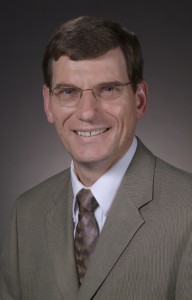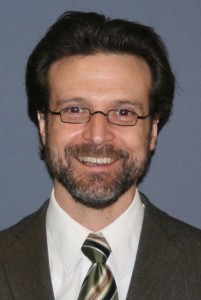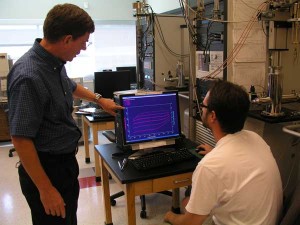
Batteries have become such a modern day convenience that many times we don’t think about them until they need recharged or replaced. Even in space, batteries make life easier by advancing exploration when they are used in land rovers, astronaut equipment and energy storage devices.
But creating a battery for space exploration requires some interesting considerations, according to Steve W. Martin, Anson Marston Distinguished Professor in Engineering in the Department of Materials Science and Engineering.
He’s working with Scott Beckman, assistant professor of MSE, on a project to create lithium-sulfur batteries that will support the next generation of human space exploration.
“The best batteries have high voltages and high capacities,” Martin explains. “But when dealing with space exploration, you also need to factor in weight, cost and safety in an environment with no oxygen.”
Lithium-sulfur batteries would accommodate most of those requirements—they are solid, lightweight, and have good voltage, capacity, and energy density.

But sulfur is not perfect. It is an electron insulator instead of being an electron conductor. And it needs to be a lithium-ion conductor as well. So the research group is changing properties and making new atomic structures to improve the potential of the chemical element.
The project is supported by a three-year grant from NASA EPSCoR, a program that provides seed funding to develop academic research enterprises directed toward long-term, self-sustaining, nationally-competitive capabilities in aerospace and aerospace-related research.
Martin and Beckman’s team is working from both theoretical and experimental perspectives while also collaborating with three NASA research facilities in addition to colleges in Iowa.
“From a theoretical view, if we can validate our work with an experiment we can have great confidence in our ideas,” Beckman says. “It’s a great relationship that we are seeing more of in the field, and this project will be able to move at such a quick pace because of it.”
Assembling the right materials

The group has already begun developing battery materials in support of the project and will eventually create all three components of a battery—the anode, cathode, and electrolyte.
While the researchers will be designing an anode (the part of a battery that discharges energy) specifically for this project, they are focusing their attention on a composite sulfur cathode. The cathode will be coated in a dual lithium-ion and electron conducting glass ceramic.
“The end design will be like a skyscraper. The sulfur is stuffed in rooms, and the walls are electron and lithium ion conductors,” Martin explains. “The rooms will only accommodate a small amount of sulfur so the electrons and lithium-ions don’t have to travel far and can be delivered at a high rate.”
This hierarchical structure will also seal sulfur in the cells, keeping it “electrochemically active and accessible” while preventing it from escaping and dissolving.
In addition, the team is studying and preparing solid, conductive electrolytes to separate the anode and the cathode.
Beckman says a recently discovered material will allow the lithium to move quickly between the anode and cathode. Since this movement determines the power of the battery and the overall number of times it can be reversibly charged and discharged, the team is hoping the material can help them build a better battery.
“We want to find out why this material operates the way it does,” Beckman adds. “Then, we will be able to take those findings and create new materials or a new arrangement based on these structures to tailor and eventually improve the battery’s properties.”
Simultaneous work

While Martin and his graduate students are busy working on creating the battery components in large glove boxes located in a Hoover Hall lab, Beckman is looking at the atomic scale of materials to determine how atoms interact and bond, finding out what those qualities mean for the material system as a whole.
“The beauty of the collaboration is that you come at the problem from two different directions,” Beckman says. “After we make our atomic level models, we can have the experimentalists validate our ideas. They provide a real benchmark of our work.”
He adds that once the model and the experiments connect, even if it is in just one or two places, it provides confidence that they have a good theoretical representation of the system. “From this, we can expand our exploration where there isn’t a direct comparison with experiment,” he says. “This can not only provide guidance for future experiments, but it also allows for an underlying understanding of the way a system works.”
For example, when Martin comes across something interesting about a property like the thermal conductivity or ionic conductivity in the material, he can take it to Beckman for further modeling.
“It’s all about making connections—the experimentalists see something interesting happen, and then we tell them why it happened. They can use those ideas as they make up the next sample and so on,” Beckman says.
Additionally, researchers at NASA Glenn Research Center in Ohio are starting some support research of lithium-sulfur batteries. The parallel work will help the group make discoveries and ideas that much quicker.
Once the battery materials are fully developed, the team will send individual components and fully assembled batteries to NASA Glenn for testing. The Johnson Space Center in Texas will address battery safety.
“There is so little oxygen in space that if you have a battery fire consuming the oxygen it can get disastrous in a hurry,” Martin explains. “That’s why safety is such a critical part of this project.”
Finally, NASA’s Jet Propulsion Laboratory will help create the battery components. Martin and his students will visit the lab in California to learn techniques and specific measurements.
All of this work will happen in parallel over the three years with each group helping the other.
Establishing a battery program in Iowa
Beyond helping advance space exploration with batteries that could allow for longer astronaut and land rover missions, this project means Iowa State is gaining research competency and capacity.
And it’s something Martin hopes to use as momentum to build a battery program on campus.
“We are using this project as a foundation to write proposals for other projects, such as sodium battery research that could impact wind turbine energy storage,” he says. “That’s the great thing about the EPSCoR program—it’s about giving us a vehicle to do more.”
Martin adds that this project is particularly exciting because he has been studying batteries in one form or another for more than 30 years.
“It’s great to see the potential of this work and what it could mean for researchers on campus and for the state.”